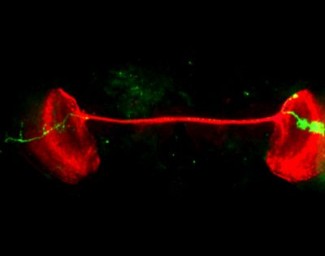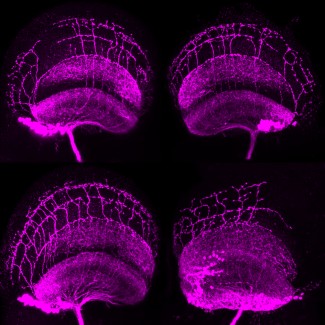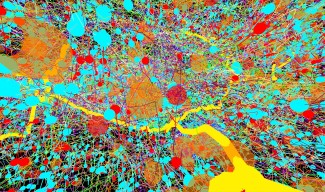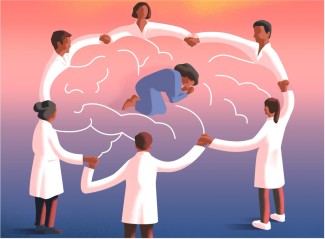Although every person’s personality is the result of genetic and environmental factors, these are not the only factors at play. Bassem Hassan and his team at Paris Brain Institute have discovered that, in fruit flies (drosophila), individuality also stems from random (stochastic) processes that occur during brain development. If this phenomenon is also confirmed in humans, it could partly explain why there are such different responses to certain psychiatric diseases.
Differences in the organisation of neural networks
All animals have personality. Whether it’s worms, chickens, flies or humans – no two individual animals will react to the same event in the same way, even if they share the same genetic make-up. In science, this is referred to as individuality. Bassem Hassan and his team at Paris Brain Institute are studying this phenomenon in drosophila, a small fruit fly species used in laboratory research.
In previous studies, researchers found that this insect’s behavior is associated with how a network of neurons involved in interpreting visual signals, called Dorsal Cluster Neurons (DCN), is organized. These neurons are present in varying amounts in each hemisphere at the start of development, then cell extensions called axons grow and migrate in the brain to connect, also in varying amounts, to two regions of the opposite hemisphere called lobula (L-DCN) and medulla (M-DCN). The resulting network will differ from one individual to the next, and these organizational differences correlate with differences in behaviors such as choosing to move directly towards an object or to avoid it.
‘We wanted to understand the origin of this morphological diversity during development’, explains Hassan. Researchers were interested in a molecular pathway called Notch that’s involved in axon orientation. They found that, in the early stages of development, this pathway is alternately expressed and repressed in DCN neurons, like a strobe, causing cell extensions to grow and retract.
This phenomenon is the result of competition between cells and occurs during a short period before each cell eventually becomes permanently Notch ON or Notch OFF, with a variable number of cell extensions. The first all become L-DCNs while the second can evolve into L-DCN or M-DCN.
This is when a second process occurs. While the extensions that appeared in the previous process tend to stretch and retract in unstable ways, only the cells in which one of these extensions stiffen will permanently become M-DCNs. To do this, a cytoskeleton molecule called tubulin is accumulated. The axon then becomes capable of permanently connecting to the medulla of the other hemisphere. ‘We cannot predict in advance which cells it will be’, explains Maheva Andriatsilavo.
Genetically encoded stochastic development mechanisms
These observations were made using molecular markings, paired with in vivo photon microscopy in animals, making it possible to film these processes and monitor them over time. The researchers combined this work with mathematical modeling that incorporated the probabilities of passing each stage of this development, confirming the random nature of these processes. ‘This discovery is a small revolution in biology’, says a delighted Bassem Hassan.We know that natural selection owes a lot to chance, but that happens in response to environmental changes. Here, we are seeing genetically encoded stochastic development mechanisms. Individuals are not pre-defined, but are instead the result of probabilistic events!’ .
According to Hassan, this phenomenon observed in fruit flies also affects many animals, including humans. ‘Individuality has been analyzed in many species, and the Notch pathway and tubulin are present in the vast majority of them’, he explains. In humans, this stochastic development phenomenon could also explain the onset of certain psychiatric disorders. ’In identical twins, if one has schizophrenia, the other has a 50% risk of also having schizophrenia. Genetic factors therefore only account for half the risk. Environmental factors and certain risk factors may also be involved, but this work indicates that the random processes that distinguish each individual could also increase disease susceptibility or instead foster resilience’, says Dr Hassan.
Until this can be proven, the team is continuing its research in this area. ‘We are studying the heterogeneity of L-DCN and M-DCN cells, as well as the characteristics of individuality, how it evolves over time, and the influence of social factors’, concludes Dr Hassan.
Sources
https://pubmed.ncbi.nlm.nih.gov/40335773/

The "Brain Development" team, led by Bassem HASSAN, is interested in the formation of neurons and neural networks during brain development thanks to models of Drosophila and murine flies. The team is studying the transcriptional control of embryonic...
Read more






